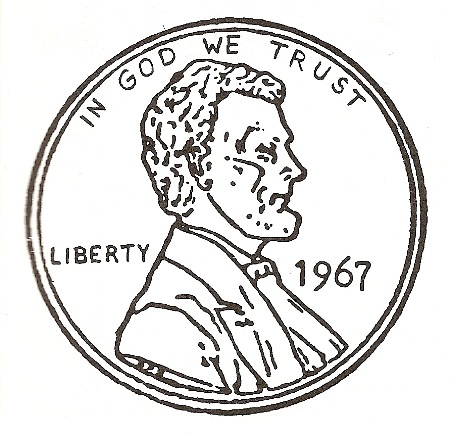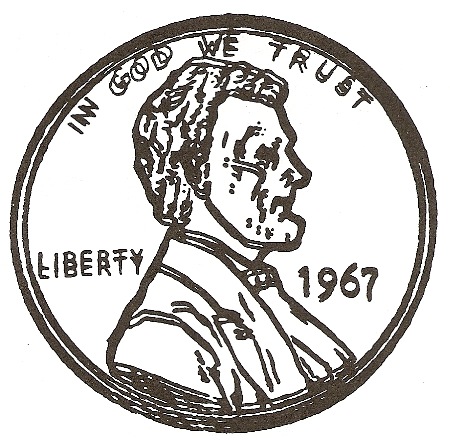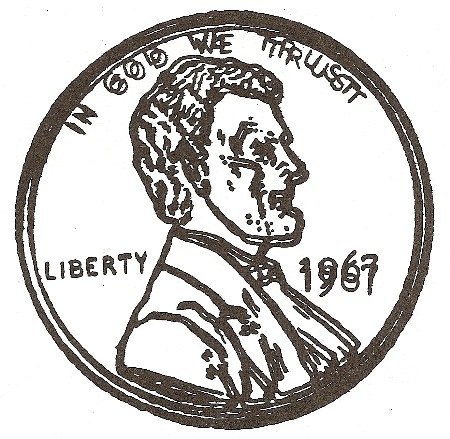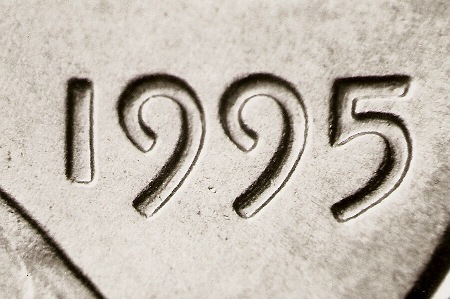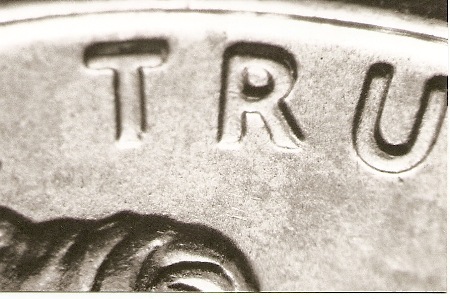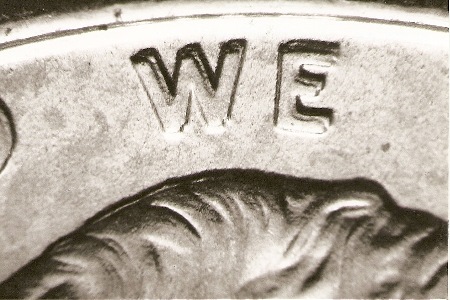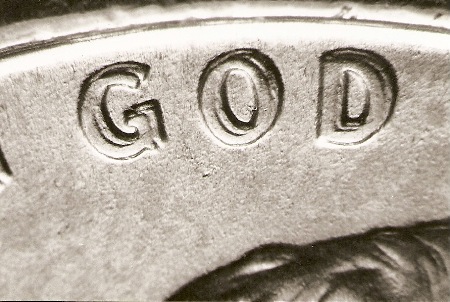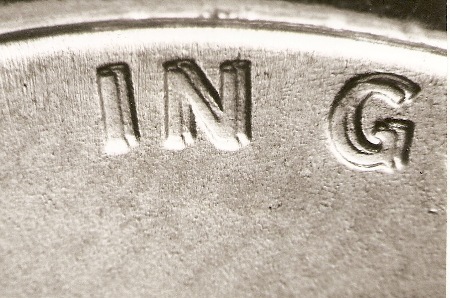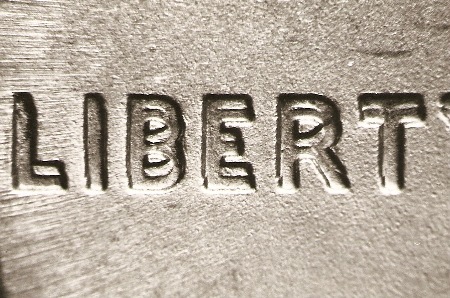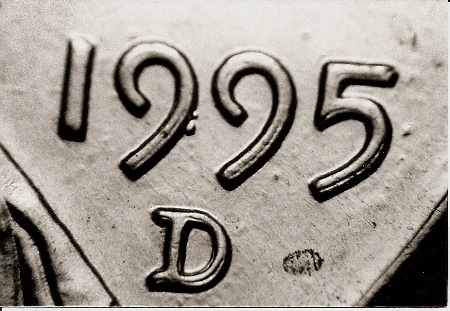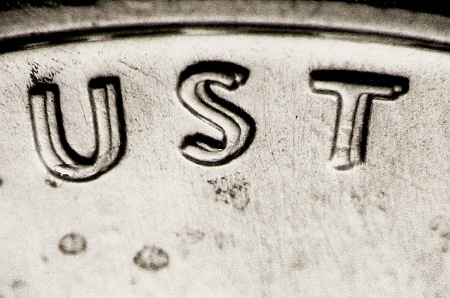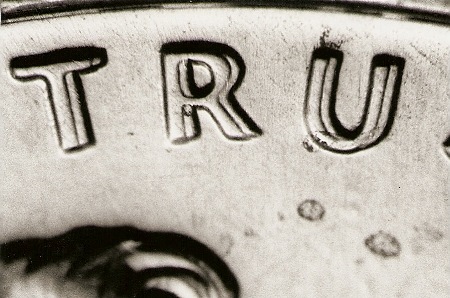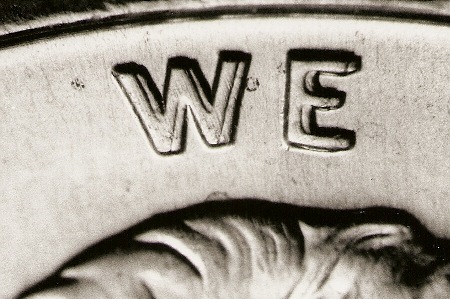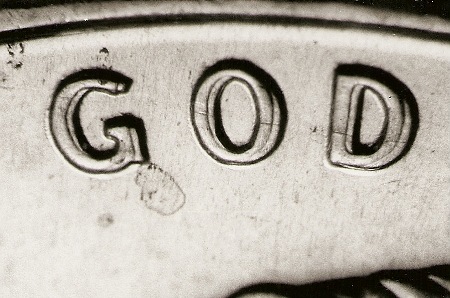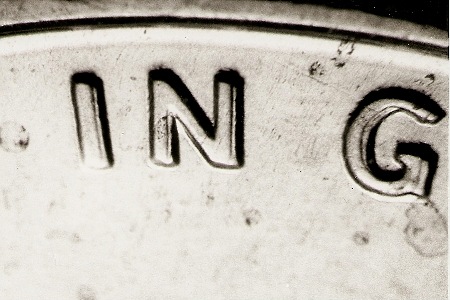


 |
 |
 |
 |
 |
 |
 |
 |
 |
 |
 |
 |
 |
 |
 |
 |
 |
 |
 |
 |
 |
 |
 |
 |
The Class V doubled die variety is very similar in appearance to the Class I doubled die varieties, but there are significant differences. Class I doubled dies have their doubling spread in a CW or CCW direction due to the fact that the hub is rotated like a wheel about the center point of the hub/die, or at a point somewhere between the center and the rim. All design elements around the rim will be affected by this rotation and thus doubled. With the Class V doubled die, the point of rotation or pivot point will be somewhere along the rim of the hub/die alignment. Because of this, the Class V doubled dies will exhibit doubling that is spread either CW or CCW. However, since the pivoting motion is at the rim, there will be virtually no doubling at the pivot point. The strongest spread to the doubling will be directly across the die from the pivot point. If the pivot point is at 12:00, there will be no doubling at 12:00 and the strongest doubling will be at 6:00. If the pivot point is at 3:00, there will be no doubling at 3:00 and the strongest doubling will be at 9:00. Moving around the outside of the die from the pivot point the spread increases until you hit the point directly opposite the pivot point. If you continue moving around the outside of the die, the spread of the doubling will decrease until you get back to the pivot point. Again as you move around the rim from the pivot point the doubling will be pulled a bit inward on one side of the die and slightly outward on the opposite side of the die. This is a natural movement due to the fact that the pivot point is at the rim. In the earlier days of listing Class V doubled die varieties they were frequently described as Class II + V varieties because of the inward or outward pull of the doubling. The inward and/or outward spreading was thought to be due to the mechanisms that produce the Class II doubled die varieties. In reality it was just a natural occurence for the Class V varieties. To illustrate the cause and effect of the Class V doubled die varieties we will again employ our sketch of the obverse of a 1967 Lincoln cent (Figure 1) and the transparecy of the Figure 1 sketch that we made.
Figure 1 - Here is the sketch of the "normal" 1967 Lincoln cent obverse.
Figure 2 - To make the image seen above we placed the transparency in perfect alignment over Figure 1. We then placed a pin through them at 3:00 along the rim. At this point we rotated (pivoted) the transparency slightly in a CCW direction. The result was Class V doubling with the pivot point at 3:00. Notice that there is very little doubling on the date, especially the 7, since it is near the pivot point. The strongest doubling is on LIBERTY which is directly across from LIBERTY. Also notice how the CCW pivot pulls the letters of IN GOD WE TRUST towards the center of the die mimmicking Class II doubling.
Figure 3 - Here we again aligned the images on the transparency with those of Figure 1. This time we placed the pin through them at 9:00 along the rim. We then pivoted the transparency slightly CCW again. Notice that now LIBERTY is at the pivot point so there is virtually no doubling to those letters until you start to move far enough from the rim. The strongest doubling is on the date which is across from the pivot point. The doubled letters of IN GOD WE TRUST are actually pulled towards the rim from this CCW pivot. Just how do these pivots at a point along the rim occur? We have seen that the Mint uses lugs on the hubs and dies to insure proper alignment between the hub and die after the initial hubbing. On the hub these are notches or grooves that correspond to the raised lugs on the die. If one of the notches on the circumference of the hub becomes filled with grease or other debris, the raised lugs on the die will be unable to enter those notches properly. The hub can then pivot on the lug that has entered properly on the side opposite the lug filled with the foreign substance. The 1995 Lincoln cent obverse doubled die variety listed as 1995 1¢ WDDO-001 in our files (Obverse Die #1) was produced in the same fashion as the movement we described to create Figure 2. The pivot point was at approximately 4:00. Very little doubling shows on the date. Moving CCW from the pivot point the doubling increases and is strongest on the letters of IN and the letters of LIBERTY. The letters of IN GOD WE TRUST also show a slight pull towards the center of the die.
The photos above show the Class V spread on 1995 1¢ WDDO-001. Notice how there is virtually no doubling to the date which is closest to the pivot point. As you move CCW from TRUST to IN the spread of the doubling increases. It is also strong on the letters of LIBERTY. If you look carefully at the letters of IN GOD WE TRUST you can also see how the doubling is pulled slightly towards the center of the die. In 1995 another strong Class V Lincoln cent obverse doubled die was produced. This one was on a Denver Mint die and is listed in our files as 1995-D 1¢ WDDO-003. It is similar to the doubling we produced for Figure 3. The pivot point is at approximately 8:00 so there is virtually no doubling on LIBERTY. The CCW spread is strongest on the design elements nearest the rim at 2:00 so these would include the letters of TRUST and the date. The mint mark also shows the CCW spread as it was part of the master design in 1995 and therefore on the working hub. As you move CCW from TRUST to IN you are moving back towards the pivot point and the spread of the doubling decreases.
Like 1995 1¢ WDDO-001, the doubling on 1995-D 1¢ WDDO-003 is spread in a CCW direction. Since the pivot point was on the opposite side of the die, the stronger doubling is on the date and the letters of TRUST while there is virtually no doubling on LIBERTY. There are numerous other Class V doubled die varieties throughout all denominations of U.S. coins. The two examples illustrated here should certainly give you a good idea as to the nature of Class V doubling. Since the Class V doubled die requires a pivoting motion at the rim, we doubt that we will be seeing examples of this class of doubled die produced on the Mint's single-squeeze hubbing presses unless a hubbing press operator stops a single-squeeze hubbing very late in the hubbing and then realigns the hub and die with a pivot between the two. They are know to stop the presses and do realignments so we can't rule out that possibility. Go To: | ||


